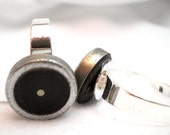'Less is more...' by YellowBugBoutique
 original painting o... $300.00 |  Gray Pocket Skirt -... $65.00 |  Circle with Squares... $45.00 |
 Gray Crystal Briole... $18.00 |  The Traveler - Wee ... $22.00 |  Vintage Typewriter ... $8.00 |
 Mini White Porcelai... $12.00 |  1.33 (where the sky... $80.00 |  Vintage Double Phoe... $4.50 |
 Recycled Geek Gear ... $ |  Tie Clip - Hammered... $17.50 |  Floor Cushion Croch... $ |
 Gray Linen Stud Kid... $40.00 |  Helios Ring 950 Pal... $1700.00 |  Dove Gray NeckScape... $26.00 |
Generated using Treasury HTML code generator by Whale Shark Websites.





















